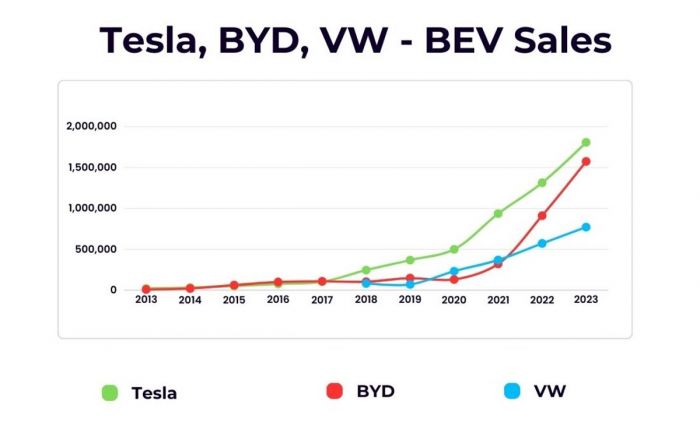If you're a Ford fan, then you know that there's nothing quite like the feeling of owning a Mustang. It has the power, reliability, and style that make it such an iconic true American car. One of the things that mainly contributes to its performance is its choice of a manual transmission that gives drivers absolute control over it.
Although the Ford Mustang already comes with a very reliable manual gearbox, you might have heard about the benefits that sequential transmissions can offer. With this type of transmission, each gear is selected manually, giving you more control over your driving experience. This can be especially useful when racing or taking corners at high speeds. So, if you're looking for an extra edge on the track, consider upgrading to a sequential transmission.

Things You Should Know Before Shifting to a Sequential Transmission
You may probably be itching to get that sequential transmission installed in your Mustang but hold on to your horses first! Before that, it's important for you to know the ins and outs of the system you are about to introduce into your car so that you will not end up regretting your decision later on.
To help you decide whether or not to swap your manual transmission to a sequential transmission, you might want to proceed with this article first which will give you a rundown of the following topics:
- What Is A Sequential Transmission?
- How Does It Work?
- What Are Its Advantages?
- What Are Its Disadvantages?
- How to Install One?
- How Much Does It Cost?
What Is a Sequential Transmission?
A sequential transmission is a type of gearbox that is often used in high-performance vehicles. It is designed to provide drivers with more control over their car's performance by allowing them to select the gears they want to use.
This is often used in racing cars and other high-performance vehicles because it offers many rewards over traditional automatic or manual transmissions when it comes to power management. For example, sequential transmissions can help drivers to get the most out of their car's engine by choosing the ideal gear for the prevailing conditions plus others that we will be showing you in the next few sections of this article.
How Does It Work?
A sequential transmission works by using a series of gears that are arranged in a "box." The driver can select the gears they want to use by either moving a lever or paddle shifters. By being able to select the gear they want to use, drivers can optimize their car's engine for varying road or track conditions.
A sequential transmission is a type of gearbox that allows for much quicker, more accurate, and smoother gear changes than a traditional manual or automatic transmission. This makes it ideal for high-performance applications such as racing, where every fraction of a second counts.
The idea is that you can't shift from 3rd to 5th gear, you will need to make a simple movement up to shift the gears up one by one or a simple move down to shift the gears down one by one.
What Are Its Advantages?
There are key advantages that a sequential transmission can offer over a traditional gearbox:
1. Faster Shift Times
Sequential transmissions can shift gears up to 50% faster than a traditional manual or automatic transmission. This can be crucial in a race situation where every millisecond is a critical element.
2. Smooth Shifting
Traditional transmissions can often be jerky and difficult to manage when shifting at high speeds. On the other hand, a sequential transmission can shift smoothly and effortlessly even at high speeds, making for a much more enjoyable and controlled driving experience.
3. Better Control
With a sequential transmission, the driver has far more control over the gears than with a traditional gearbox. This can be useful in certain racing situations where you may need to downshift quickly or make other quick adjustments on the fly.
4. Increased Reliability
Sequential transmissions are built to withstand the rigors of high-performance driving and are generally much more reliable than traditional gearboxes. This is important in a race situation where a broken-down car can cost you precious time (and potentially the race).
5. Better Control on Fuel Economy
Another advantage of a sequential transmission is that it can help drivers to save fuel if smartly utilized. This is because the engine only has to work as hard as necessary to maintain the desired speed, rather than having to constantly adjust to changes in gear ratios.
6. Improved Power Management in Daily Drives
While the advantages of a sequential transmission are most apparent on the racetrack, they can also be beneficial on regular daily drives. Smooth and fast gear changes can make for a more enjoyable driving experience, and increased control and reliability can be a big advantage in difficult driving situations. If you're looking for a way to get the most out of your Mustang on a daily basis, then a sequential transmission may be just what you need.
If you're looking to get the most out of your Mustang off or on the racetrack, then a sequential transmission is definitely something to consider. It can offer some significant advantages over a traditional gearbox and can help you take your driving to the next level.
What Are Its Disadvantages?
While a sequential transmission can offer some significant advantages over a traditional gearbox, there are also some potential disadvantages to consider, including the following:
1. Expensive
One of the biggest disadvantages of a sequential transmission is its cost. These transmissions are generally more expensive than traditional gearboxes, which can make them out of reach for many consumers.
2. Increased Maintenance
Another potential disadvantage of a sequential transmission is the increased maintenance required. These transmissions tend to be more complex than traditional gearboxes, and as such, require more frequent and specialized maintenance. This can add to the overall cost of ownership for these transmissions.
3. Lower Fuel Economy
Due to the way they work, sequential transmissions generally have lower fuel economy than traditional gearboxes. This is because they tend to be less efficient at managing engine power, which can lead to higher fuel consumption.
4. Less Forgiving in Everyday City Driving
While a sequential transmission can offer some advantages in terms of control and performance, it can also be less forgiving in city drives. These transmissions are designed for high-performance applications and as such, can be more difficult to manage in stop-and-go traffic or other low-speed situations.
5. Not Compatible with All Models
Another potential disadvantage of a sequential transmission is that they are not compatible with all vehicles. In order to install one of these transmissions, you may need to make modifications to your vehicle, which can add to the overall cost. Additionally, not all vehicles can handle the increased power and torque output of a sequential transmission, so it's important to do your research before deciding to install one.
While there are some potential disadvantages to consider, a sequential transmission can still offer many advantages over a traditional gearbox. If you're looking for a way to get the most out of your Mustang, then a sequential transmission is definitely something to consider.
How to Install One?
If you're interested in installing a sequential transmission in your Mustang, there are a few things you need to know. These include the following:
- First, you'll need to find a reputable automotive shop that specializes in this type of work. Installing a sequential transmission is not a simple task, and as such, should only be attempted by experienced professionals.
- Once you've found a shop that you can trust, the next step is to schedule an appointment for your installation. During the installation process, the shop will remove your old transmission and replace it with the new one. This process can take days of uninterrupted work, so it's important to plan accordingly before proceeding.
- When the installation is already complete, the shop will test-drive your vehicle to make sure everything is working properly.
- After the installation is complete, you'll be able to enjoy the benefits of your new sequential transmission.
These transmissions are designed for high-performance applications, and as such, can offer significant advancements when it comes to managing your car's power and torque. Additionally, they can provide better precision when shifting gears, making them an excellent choice for track days or other driving situations.
How Much Does It Cost?
The cost of a sequential transmission can vary depending on several factors, including the make and model of your vehicle, the shop you use for installation, the brand of sequential transmission you will be using, and the level of customization you want.
In general, you can expect to pay anywhere from $4,000 to a whopping $11,000 for a complete installation. However, it's important to note that this is just a rough estimate, and the actual cost may be higher or lower depending on the factors mentioned earlier.
Conclusion
All in all, a sequential transmission can be a great choice for drivers who are looking to get the most out of their Mustang. They offer improved performance and control, as well as increased power and torque. However, there are some potential disadvantages to consider before making your decision.
Installation can be expensive and time-consuming, so it's important to do your research beforehand. If you decide that a sequential transmission is right for you, make sure to find a reputable automotive shop that specializes in this type of work.
About the authors
The CarAraC research team is composed of seasoned auto mechanics and automotive industry professionals, including individuals with advanced degrees and certifications in their field. Our team members boast prestigious credentials, reflecting their extensive knowledge and skills. These qualifications include: IMI: Institute of the Motor Industry, ASE-Certified Master Automobile Technicians; Coventry University, Graduate of MA in Automotive Journalism; Politecnico di Torino, Italy, MS Automotive Engineering; Ss. Cyril and Methodius University in Skopje, Mechanical University in Skopje; TOC Automotive College; DHA Suffa University, Department of Mechanical Engineering






Add comment